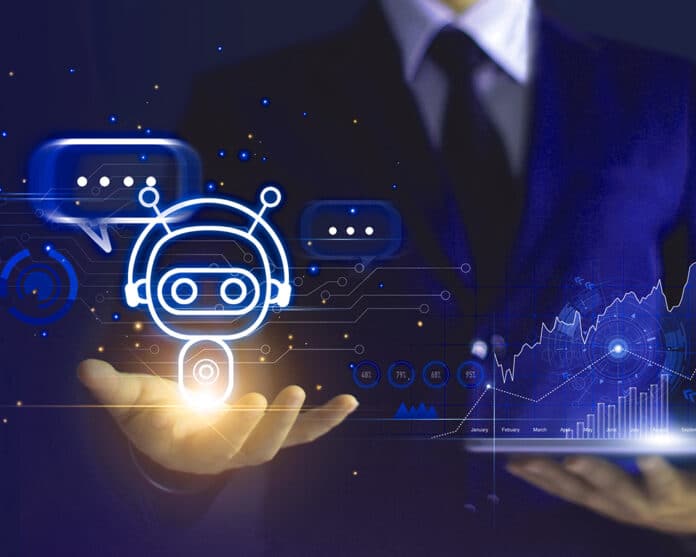Almost all medium and large businesses are using AI chatbots to interact with clients and understand their needs better. Several open source and free platforms can be used to build and enhance the functioning of these chatbots. You can choose from these.
Web development is a confluence of various disciplines, including graphic design, interface design, user experience, client-side and server-side scripting, and network security configuration. The process begins with the foundational aspect of web design, which involves crafting the visual aesthetics and functional layout. This phase necessitates a deep understanding of both graphic design principles and human-computer interaction paradigms to ensure that the product is both visually appealing and intuitively navigable.
The subsequent phase, web programming, is where the conceptual designs are transformed into a tangible, interactive platform. This stage leverages a plethora of programming languages and frameworks, such as HTML, CSS, JavaScript and their associated libraries and pre-processors, which collectively bring static designs to life through dynamic content and interactive elements.
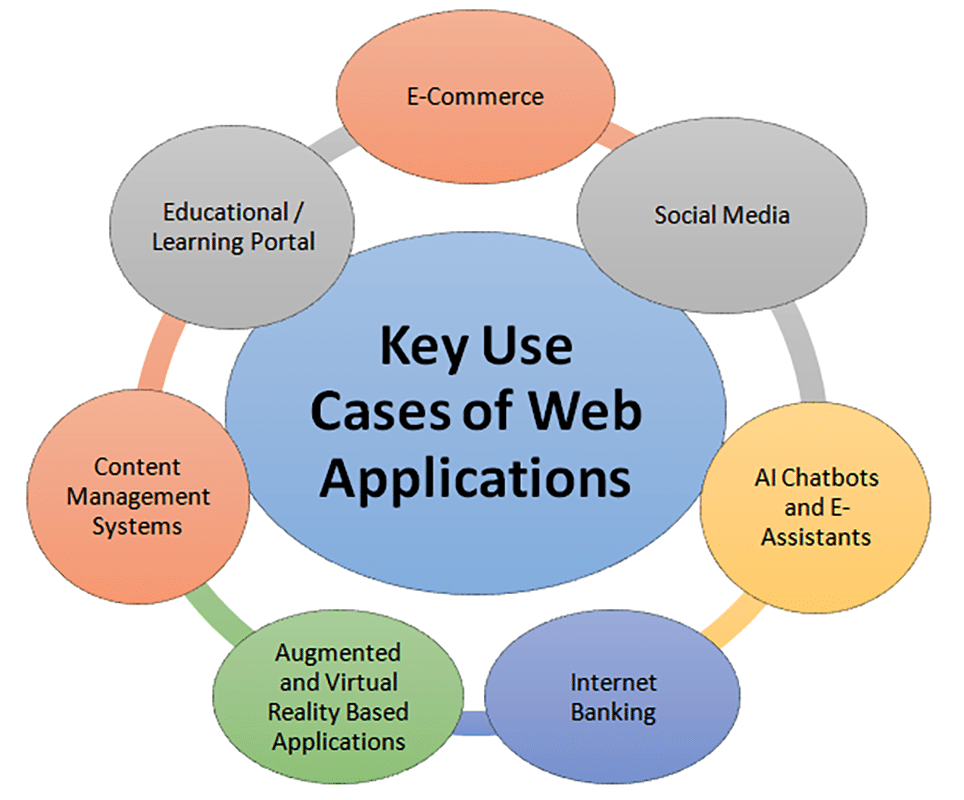
Server-side programming, involving languages like Python, Ruby, PHP and their corresponding frameworks, such as Django, Ruby on Rails and Laravel, plays a crucial role in managing the backend operations, including data storage, user authentication and server communication.
The significance of web development is underscored by its extensive range of use cases, which permeate virtually every sector of modern society.
E-commerce: Web development is pivotal in creating platforms that facilitate online transactions, product browsing and customer service. Web applications like Amazon exemplify how sophisticated web development can drive commercial success by providing seamless, user-friendly interfaces coupled with robust backend systems that manage millions of transactions daily. AI is redefining the shopping experience by enabling personalised recommendations, automated customer service and efficient inventory management. This integration of AI into e-commerce platforms is a key factor driving the market growth for AI-based web and mobile applications.
Healthcare: The healthcare industry is witnessing a paradigm shift through the implementation of telemedicine and electronic health records (EHR) systems, which rely heavily on secure, robust web applications. These systems enable remote consultations, real-time patient monitoring and efficient management of patient data, thereby improving the quality of care and patient outcomes. The healthcare sector is experiencing a transformative impact from AI-based web and mobile applications. AI-powered diagnostic tools and health monitoring apps are revolutionising patient care by enabling early detection of diseases, personalised treatment plans and remote patient monitoring.
Social networks: In the realm of social networking, platforms such as Facebook and Twitter rely heavily on complex web development to manage vast amounts of user-generated content, real-time communication and personalised user experiences.
Finance: The financial services industry is leveraging AI to enhance fraud detection, risk management and customer service. AI algorithms analyse transaction patterns and detect anomalies in real-time, thereby preventing fraudulent activities and ensuring secure transactions. In addition, AI-powered robo-advisors provide personalised investment advice based on individual financial goals and risk profiles, democratising access to financial planning services.
Education and learning portals: In the educational sector, web development has revolutionised the way knowledge is disseminated and consumed. Online learning platforms like Coursera, Udemy, Khan Academy and others employ advanced web technologies to deliver interactive courses, video lectures and real-time assessments, making education more accessible and flexible.
E-governance: Government and public services also benefit from web development by offering online portals where citizens can access information, submit applications and interact with government services, thus enhancing efficiency and transparency.
Market size of AI-based web and mobile applications
The market size of AI-based web and mobile applications has witnessed exponential growth in recent years, driven by rapid advancements in artificial intelligence and its integration into various facets of digital technology. As AI technologies continue to mature, their applications in automating processes, analysing vast datasets and providing predictive insights are becoming increasingly ubiquitous, thereby expanding the market landscape.
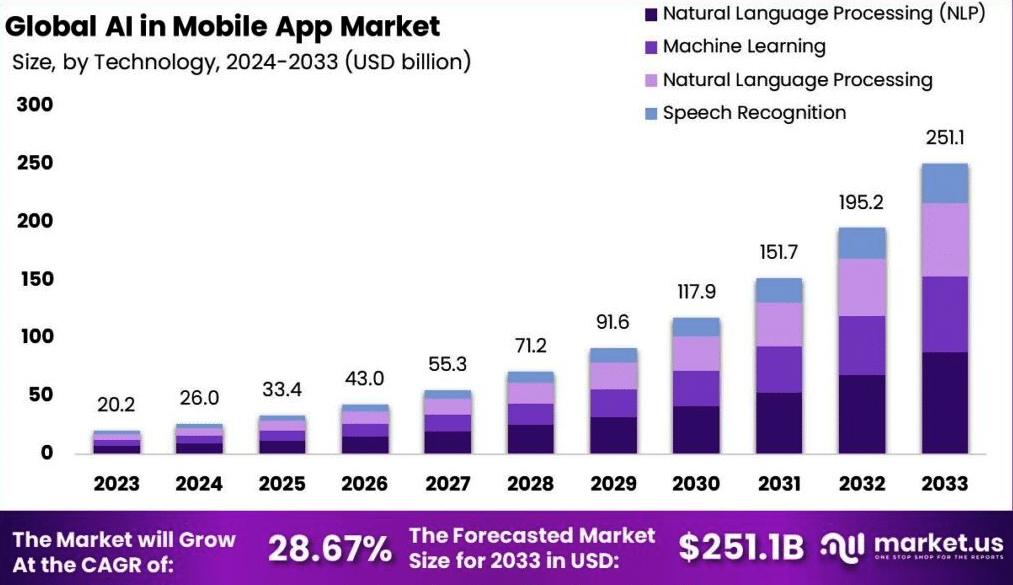
According to recent industry reports, the global market for AI-based applications is poised to reach unprecedented valuations. The market was valued at approximately US$ 40 billion in 2020 and is projected to grow at a compound annual growth rate (CAGR) of over 40% from 2021 to 2028. This remarkable growth trajectory can be attributed to the escalating investment in AI research and development by major tech companies, startups and government bodies worldwide.
One of the key drivers of this market expansion is the widespread implementation of AI in customer service applications. Chatbots and virtual assistants, powered by natural language processing and machine learning algorithms, have become integral components of websites and mobile apps, providing users with real-time support and personalised interactions. This has significantly improved customer satisfaction and operational efficiency for businesses across various sectors, from retail to banking. As AI continues to evolve and its adoption becomes more widespread, the market for AI-based applications is expected to witness sustained growth, reshaping the digital landscape and transforming the way businesses and individuals interact with technology.
Platforms for web-based AI chatbots
The rise of AI chatbots has transformed how businesses interact with their customers, providing instant support and personalised experiences. Several platforms offer robust tools for creating web-based AI chatbots, many of which are available for free. These platforms leverage advanced natural language processing (NLP) and machine learning algorithms to deliver sophisticated chatbot capabilities. Here are some of the most prominent and free platforms for developing AI chatbots.
ChatterBot
URL: pypi.org/project/ChatterBot/
ChatterBot is a versatile Python library designed for developing AI-driven chatbots. It provides an easy-to-use framework that enables developers to create chatbots capable of engaging in conversations with users through various communication channels. ChatterBot employs machine learning algorithms to generate responses based on the input it receives, making it adaptable and capable of improving over time as it processes more interactions.
Bottender
URL: bottender.js.org
Bottender is a modern and flexible framework designed for creating conversational AI chatbots. It is particularly known for its ease of use and versatility, allowing developers to build chatbots that can run on various messaging platforms like Facebook Messenger, LINE, Telegram, Viber and more. Bottender leverages the power of Node.js and provides a structured way to manage the logic and flow of conversations, making it an excellent choice for both beginners and experienced developers. Bottender is a powerful and flexible framework that simplifies the process of developing AI chatbots for multiple messaging platforms.
Its developer-friendly API, extensive customisation options and active community make it an excellent choice for building robust and scalable chatbots. Whether you are a seasoned developer or just starting with chatbot development, Bottender provides the tools and resources you need to create effective conversational agents.
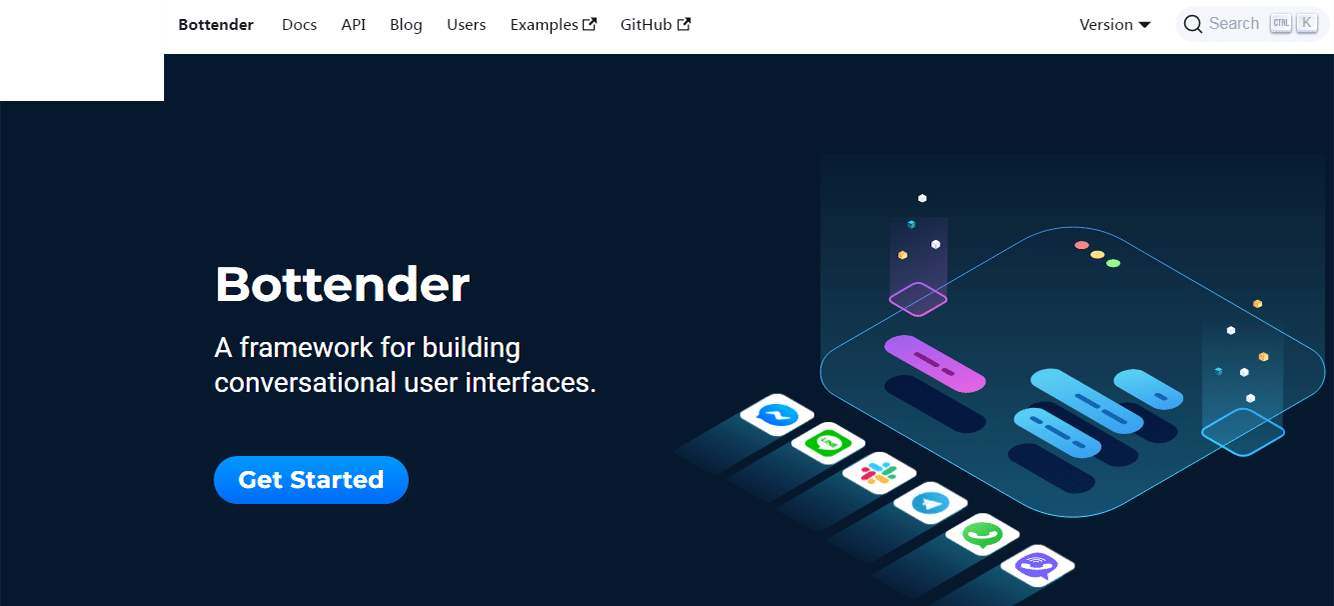
BotLibre
URL: botlibre.org
BotLibre is a versatile and powerful platform for AI chatbot development, providing users with an extensive array of tools and features to create, deploy and manage chatbots across various applications. As an open source solution, BotLibre offers the flexibility to customise and extend its capabilities to meet specific needs, making it suitable for developers and businesses alike. One of its standout features is the comprehensive natural language processing (NLP) engine, which enables chatbots to understand and respond to user queries in a conversational manner. This NLP engine supports multiple languages, enhancing the platform’s utility for global applications.
BotLibre provides an intuitive web-based interface that simplifies the chatbot creation process, even for users without programming expertise. This interface includes a visual script editor that allows users to design conversational flows, integrate multimedia elements and set up complex decision trees with ease. For more advanced users, BotLibre supports custom scripting through its proprietary programming language, PAI, offering granular control over chatbot behaviour and interactions. The platform also supports seamless integration with various messaging services and social media platforms, such as Facebook Messenger, Twitter and Slack, facilitating widespread deployment and accessibility.
BotLibre includes robust analytics and monitoring tools, enabling developers to track user interactions, analyse performance metrics and continuously refine their chatbots for improved user experiences. Security and privacy are also prioritised on the BotLibre platform, with features such as user authentication, encrypted communications and compliance with data protection regulations. These capabilities ensure that chatbots built on BotLibre can safely handle sensitive information and operate within legal frameworks.
Botpress
URL: botpress.com
Botpress is another platform designed for developing conversational AI applications. It offers a modular architecture, enabling developers to customise and extend the platform to meet their specific needs. Botpress provides an intuitive visual interface for designing chatbot flows, as well as robust NLP capabilities for understanding user inputs. The platform supports deployment on-premises or in the cloud and integrates with various messaging channels.
Dialogflow (by Google Cloud)
URL: dialogflow.cloud.google.com
Dialogflow is a comprehensive platform for building conversational interfaces across various channels, including websites, mobile apps and messaging services. It provides a user-friendly interface for designing chatbots, powerful NLP capabilities and seamless integration with Google Assistant, Slack and Facebook Messenger. The platform supports multiple languages and offers pre-built agents to simplify the development process. While Dialogflow offers a free tier, it also provides paid options for more extensive usage.
Microsoft Bot Framework
URL: dev.botframework.com
The Microsoft Bot Framework is a versatile platform for creating, deploying and managing chatbots. It includes the Bot Builder SDK, which supports multiple programming languages and the Bot Service, which offers an integrated development environment. The platform provides a range of tools and templates to streamline chatbot development and integrates with various communication channels, including Microsoft Teams, Skype and Slack. The free tier allows developers to build and test bots, with additional features available in the paid plans.
These platforms offer a range of tools and features to help businesses create sophisticated AI chatbots for web applications. Whether you are a developer looking for a customisable solution or a business owner seeking an easy-to-use interface, these platforms provide a variety of options to suit different needs and budgets.
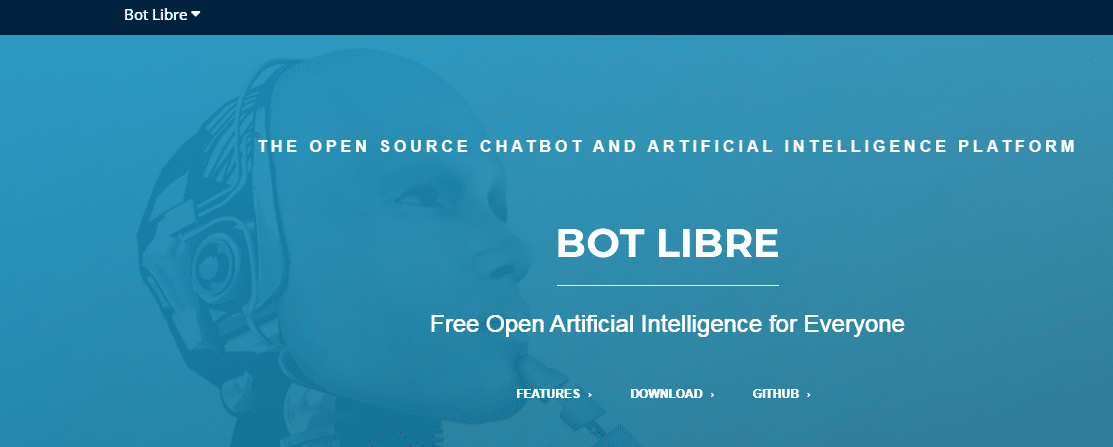
R&D on AI-based chatbots
The scope for research and development (R&D) in the field of AI-based web and mobile chatbots is vast and continually expanding, driven by the rapid advancements in artificial intelligence, natural language processing and machine learning.
Advanced natural language understanding: One prominent field of R&D is improving natural language understanding (NLU) and natural language generation (NLG). Despite significant progress, chatbots often still struggle with complex, nuanced conversations and ambiguous language. Researchers are working on developing more sophisticated algorithms that can better understand context, detect sentiment and manage conversations dynamically. This involves training models on diverse datasets and leveraging deep learning techniques to enhance their comprehension and responsiveness.
Context-awareness and personalisation: Another critical area is enhancing the context-awareness and personalisation capabilities of chatbots. Current chatbots often operate based on predefined scripts and limited contextual understanding. R&D efforts are focused on creating systems that can remember past interactions, understand user preferences and provide personalised responses. This involves integrating machine learning models that can learn from user behaviour over time and adapt interactions accordingly, making the chatbot experience more natural and engaging.
Multilingual and cross-cultural capabilities: The development of multilingual and cross-cultural chatbots is another significant research area. With the global nature of businesses today, there is a growing need for chatbots that can effectively communicate in multiple languages and understand cultural nuances. This requires advancements in language translation models and the creation of training datasets that encompass diverse languages and cultural contexts. By improving these capabilities, chatbots can provide a more inclusive and effective service to a broader audience.
Integration with emerging technologies: R&D is also exploring the integration of chatbots with emerging technologies such as augmented reality (AR), virtual reality (VR) and the Internet of Things (IoT). For instance, AR and VR can create immersive customer service experiences, while IoT integration can enable chatbots to interact with smart devices and provide more contextual support. These integrations open up new possibilities for innovative applications and services, enhancing the overall user experience.
Ethical AI and bias mitigation: Addressing ethical concerns and mitigating biases in AI chatbots is a critical aspect of ongoing research. AI systems can inadvertently perpetuate biases present in their training data, leading to unfair or discriminatory outcomes. Researchers are working on developing methods to detect and reduce biases in chatbot interactions, ensuring that these systems operate fairly and ethically. This involves creating more transparent AI models and establishing guidelines for ethical AI development and deployment.
Security and privacy enhancements: As chatbots handle sensitive user data, ensuring security and privacy is paramount. Research in this area focuses on developing robust security protocols to protect user information and prevent unauthorised access. This includes advancements in encryption technologies, secure authentication methods and compliance with data protection regulations. Enhancing security and privacy measures not only builds user trust but also ensures the safe deployment of AI chatbots in various industries.
Improved user experience and human-AI collaboration: Improving the overall user experience and fostering effective human-AI collaboration is a vital research direction. This involves studying human-computer interaction (HCI) principles to design chatbots that are intuitive, user-friendly and capable of working seamlessly with human agents. Research in this area aims to create chatbots that can handle routine tasks efficiently while escalating complex issues to human agents, thereby optimising the use of both human and AI resources.
All these R&D efforts are poised to significantly elevate the capabilities and applications of AI chatbots, transforming how businesses operate and interact with their customers.


























































